In the scientific literature, this treatment with red light or near-infrared is called either photobiomodulation (PBM) or low-level laser (light) therapy (LLLT). I will be using the term photobiomodulation.
In photobiomodulation, the affected tissue is irradiated by light, usually from a laser or LED source. This irradiation appears to improve the function of the malfunctioning tissue.
2. Mechanisms of photobiomodulation
Most wavelengths of light (ultraviolet, blue, green, infrared) do not penetrate the skin at all. Instead, they are absorbed in the outer layers of skin.
On the other hand, red light and near-infrared belong to the so-called optical window. These wavelengths are able to significantly penetrate through the skin:
Red light and near-infrared are able to induce significant physiological changes inside the tissue. According to modern knowledge, the red light inside the cells activates the mitochondrial enzyme cytochrome c oxidase, improving the mitochondrial respiration and oxygen consumption (de Freitas & Hamblin 2016, Wang et al. 2017).
This shift in cellular metabolism leads to other changes in cell function, eg. gene expression and growth factor production (Prindeze et al. 2012).
In the scientific literature, there are numerous examples of the significant cellular effects of red light and near-infrared. Some of these discoveries were briefly presented in this dissertation from the University of Gothenburg.
Red light has been repeatedly shown to have positive effects on the markers of energy metabolism and inflammation in animal studies. The following table shows some of these results:
Since the disturbances of energy metabolism have been associated to all kinds of chronic diseases, the suggested disease-relieving mechanism of red light by improving mitochondrial function is very plausible.
Photobiomodulation requires red or near-infrared light. While there is a plenty of talk about the beneficial effects of far-infrared radiation, it probably doesn't have the same mechanisms and benefits as photobiomodulation. (The majority of infrared saunas don't emit any near-infrared, though some companies have started selling saunas with near-infrared-emitting heat lamps.)
3. Human research on photobiomodulation
In humans, photobiomodulation has been studied for a few dozen different ailments. The list below shows some of these possible indications. New clinical trials are also constantly in progress.
Regarding some of these indications, systematic reviews have also been published. The table below presents some of those, featuring over 6500 patients from over 140 randomized and controlled trials (RCTs).
The table includes my estimation of the quality of the evidence. B stands for "moderate evidence" and C for "weak evidence". My estimates are not based on as strict criteria as GRADE scoring used by Cochrane Library.
It can be seen that many of these systematic reviews were published between 2014 and 2016. Photobiomodulation research is currently accumulating with a very fast pace, approximately 400 research articles per year. There will probably be dozens of new systematic reviews before the year 2020.
My overall conclusion of these systematic reviews is that photobiomodulation appears to be beneficial for a large variety of different indications. The evidence is mainly of moderate/weak quality, which implicates a need for additional randomized trials of high methodological quality.
4. Animal research on photobiomodulation
Photobiomodulation has not been studied solely in humans. If you look at the literature, you can find studies conducted also in rats, mice, rabbits, dogs, pigs, minipigs, monkeys, sheep, horses, bovines, cats, sand rats, gerbils, guinea pigs, frogs, bumblebees, fruit flies, sea urchin larvae, snails, roundworms, earthworms and flat worms.
In animal studies, photobiomodulation has been studied with good results for nearly a hundred different indications. Impressive results have been reported for autoimmune diseases, brain diseases, osteoporosis, joint inflammation and dozens of other diseases:
As the list shows, there is a vast literature on photobiomodulation. The total amount of these animal studies indexed in PubMed is more than 700.
5. The comprehensive research database
In order to learn as much as possible about red light and near-infrared, I spent a couple of months compiling photobiomodulation research into a spreadsheet. My spreadsheet includes currently more than 2250 scientific articles on the subject:
Low level laser therapy (LLLT) / photobiomodulation (PBM) / red/NIR phototherapy studies - a comprehensive database by Vladimir Heiskanen6. Photobiomodulation research examples: Eyes
6.1. Human studies
In 2008, two German physicians published a retrospective report of 203 patients with the age-related macular degeneration. According to the paper, treatment with near-infrared light (780 nm) improved visual acuity in 95 percent of the patients, and the treatment was also associated with reduced edema, bleeding, metamorphopsia, scotopia and dyschromatopsia.
The beneficial results lasted for 3-36 months after the treatment. The report was generally very promising. However, these kinds of retrospective reports are considered to have a high risk of bias, and should be confirmed by high-quality controlled studies (Ivandic&Ivandic 2008).
In 2016, Canadian researchers published very similar results from an observational study, where they used mainly a red LED light (660 nm). The therapy was associated with improved visual acuity and contrast sensitivity, and reduced drusen (Merry et al. 2016). This research group is currently working on a randomized trial (LIGHTSITE1) in order to repeat these findings with a proper methodology.
6.2. Animal studies
Research groups from a wide range of countries (UK, Australia, Spain, Iran, Italy, India, USA) have studied the effects of photobiomodulation on retinal diseases.
According to the study results, red light appears protective against various sources of retinal degeneration, eg. age-related macular degeneration, diabetic retinopathy, light-induced retinal damage, oxygen-induced retinopathy and methanol toxicity (Eells et al. 2016, Geneva 2016).
7. Photobiomodulation research examples: Bone
7.1. Human studies
In a randomized trial of 50 patients with hand/wrist fractures, photobiomodulation with near-infrared laser (830 nm) reduced the pain and greatly improved functional parameters compared to the placebo group. Each subject had ten treatment sessions, each of which lasted 10 minutes per each fractured site (Chang et al. 2014).
7.2. Animal studies
Nearly one hundred scientific articles reporting the effects of photobiomodulation on bone repair have been published. The results have been mostly positive, and numerous research groups have reported similar changes, e.g. improved bone formation (Pinheiro et al. 2015).
8. Photobiomodulation research examples: Hypothyroidism
In a Brazilian randomized trial with 43 hypothyroid patients, ten sessions of photobiomodulation with a near-infrared laser (830 nm) resulted in a decreased levothyroxine requirement in the patients at the 9-month follow up.
Remarkably, forty-eight percent of the patients were able to keep their thyroid hormone levels within the reference ranges completely without a medication (Höfling et al. 2013, Höfling et al. 2010).
Similar positive results have also been reported in several Russian and Ukrainian studies that I've covered in another blog article.
9. Photobiomodulation research examples: Parkinson's disease
In 2008, researchers from Wisconsin found that photobiomodulation was beneficial for an in vitro model of Parkinson's disease (Liang et al. 2008). After that, researchers from Australia, France and Switzerland have published a large amount of research showing that photobiomodulation protects the brain and reduces the motor symptoms in various animal models of Parkinson's disease, including MPTP- or 6OHDA-injected and α-synuclein overexpressing animals (Johnstone et al. 2016).
In 2016, a paper titled Near-infrared light is neuroprotective in a monkey model of Parkinson disease was published in the high-impact journal Annals of Neurology. In this study, red light was administered into MPTP-poisoned macaque monkey brain via an optical fiber. This treatment reversed most of the clinical symptoms in the majority of the monkeys (Darlot et al. 2016).
Most of the studies have used red light (670 nm), but in some of the papers, near-infrared (810 nm) has also been used. Usually the light has been administered transcranially or straight to the head via an optic fiber, but in one study, body irradiation also had remote neuroprotective effects on the brain, suggesting that photobiomodulation might have systemic effects (Johnstone et al. 2014, Kim et al. 2017).
10. Photobiomodulation research examples: Heart and circulation
Research groups from Israel, USA, China and Brazil have investigated the effects of photobiomodulation on the recovery from myocardial infarct. Data from numerous trials conducted in mice, rats, dogs and pigs indicate that illuminating the heart with red light after an infarct could significantly decrease the injured area and therefore improve the heart function (Carlos et al. 2016, Blatt et al. 2016).
As an example, in this experimental study with dogs, photobiomodulation with near-infrared light appeared to decrease the injured area by approximately 50%. The treatment also reduced mortality in the dogs (Oron et al. 2001):
Brazilian researchers have also noted that photobiomodulation could alleviate pain, bleeding and other complications related to sternotomy (Fernandes et al. 2016, Lima et al. 2016a, Lima et al. 2016b, de Oliveira et al. 2014).
In the end of 1990s, researchers from the USA studied the effects of red light on restenosis and neointimal hyperplasia after balloon angioplasty in rabbits. The highly promising results were published in high-impact journals JACC and Circulation. Some additional studies have also been conducted in pigs and humans (Kipshidze et al. 1998, Kipshidze et al. 2001, Derkacz et al. 2010, De Scheerder et al. 1998, De Scheerder 2000, De Scheerder 2001a, De Scheerder et al. 2001b).
In 2012, a group of Austrian researchers discovered that red light induces the vasodilation of coronary arteries. The researchers concluded: "As LED sources are of small size, simple, and inexpensive build-up, they may be used during routine coronary artery bypass surgery to ease suturing of anastomosis by target vessel vasodilation" (Plass et al. 2012)
Korean researchers have also shown that illuminating rabbits with polarized light from a regular tungsten lamp could protect the animals from experimental atherosclerosis (Park et al. 2012).
11. Photobiomodulation research examples: Other indications
Alzheimer's disease:
- Photobiomodulation has been studied for various animal models of Alzheimer's disease, with good results (Lu et al. 2017, Farfara et al. 2015, Purushothuman et al. 2014, Grillo et al. 2013).
- Photobiomodulation has shown some efficacy for exercise performance, muscle growth, sarcopenia, myopathies and muscle injuries in animal and human studies (Ferraresi et al. 2016, Baroni et al. 2014, Leal-Junior et al. 2014, Corazza et al. 2013).
- Photobiomodulation appears to protect rodents from noise-induced hearing loss (Tamura et al. 2015, Lee et al. 2016, Tamura et al. 2016).
- One of the most common complications of cancer treatments is the painful inflammation of oral mucosa. Photobiomodulation has been studied for this indication in approximately twenty randomized trials, very often with great results (Oberoi et al. 2014, Silva et al. 2015, Soto et al. 2015, Ferreira et al. 2016).
- Quite recently a research group from Harvard Medical School published two papers, in which they demonstrated that photobiomodulation with visible red light can protect mice from multiple different models of this dangerous bleeding disorder. The first article was published in the high-impact journal Science Translational Medicine (Zhang et al. 2016, Yang et al. 2016).
- Photobiomodulation has been studied in the treatment wounds and burns. More than a hundred animal studies have been published, but the human research is somewhat scarce (Gupta et al. 2015, Keshri et al. 2016, Ojea et al. 2016, Tchanque-Fossuo et al. 2016).
12.1. Introduction
In photobiomodulation, the body is locally irradiated by visible red light or invisible near-infrared.

(wavelength, intensity, energy, number of sessions) vary a lot.
Usually a wavelength ranging from 600 to 1100 nanometers is used. Within this range, some wavelengths have a stronger cellular effect than others, and some wavelengths (eg. 730 nm) might be utterly ineffective. These differences appear to be explained by absorption spectra of cytochrome c oxidase (Karu 2010, Wong-Riley et al. 2005, Gupta et al. 2014, Wu et al. 2012).
There is also some evidence suggesting that longer wavelengths (eg. 980 or 1060 nm) might have an unique mechanism of action that isn't based on absorption by cytochrome c oxidase. Some hypotheses have been published, describing intracellular water as the primary photoacceptor mediating the photomodulatory effects observed with longer wavelengths (Wang et al. 2017, Hamblin 2017).
Near-infrared penetrates the tissue better than red light, so it's more commonly used for treating body parts that are under the skin (brain, glands, joints, muscles). Visible red light is more commonly used in the treatment of wounds or skin diseases.
12.2. Treatment parameters
The following table provides the basic information about the most relevant treatment parameters (Hadis et al. 2016, Jenkins&Carroll 2011).
Here are some examples from various human trials. It can be noted that there are huge differences between the experiments (note: the energy density isn't reported - I will add it later).
12.3. Dose response
The therapeutic window of photobiomodulation is somewhat narrow and looks like this:
Underdosing has been suggested to explain many of the negative results in clinical photobiomodulation trials (Tunér&Hode 1998). The ineffectiveness of overdosing has also been demonstrated, especially in dozens of experimental studies (Huang et al. 2011). Thus, biphasic dose-response appears to be a very significant issue in photobiomodulation.
Low-to-moderate doses of light are often described as stimulating and high doses as inhibitory, because some markers that can be increased by low doses of light, have been shown to decrease with excessive light doses.
The exact mechanism of biphasic dose-response is not known, but it might be related to excessive formation of reactive oxygen species (ROS): "The Janus nature of reactive oxygen species (ROS) that may act as a beneficial signaling molecule at low concentrations and a harmful cytotoxic agent at high concentrations, may partly explain the observed responses in vivo" (Huang et al. 2011)
In some reviews articles, photobiomodulation is said to have a hormesis-like effect: "The hormetic response of both LLLT and MB consists of an increase in the effect at a low dose, followed by a decrease in the same effect with an intermediate dose, until the effect is equal to a control-type effect. With doses increasing beyond the hormetic zone, the effect decreases even further, until it is below the control effect." (Rojas&Gonzalez-Lima 2013)
12.4. Treatment devices
In the past, the photobiomodulation light sources were mostly laser-based, expensive and only available to clinicians. Nowadays, the situation has improved and many companies are selling much cheaper LED devices directly to patients.
In the table below, I list some of the photobiomodulation devices that I'm aware of.
There are some arguments about the efficacy of laser vs. LED lights in photobiomodulation. In the past, photobiomodulation was called low-level laser therapy (LLLT) and basically all of the research was conducted with low-level lasers.
Nowadays there is an overwhelming evidence showing that photobiomodulation doesn't require coherent light and light-emitting diodes (LEDs) are suitable for photobiomodulation, though laser light might have a better penetration depth into the tissue, because it produces so-called laser speckles.
"Most of the early work in this field was carried out with various kinds of lasers, and it was thought that laser light had some special characteristics not possessed by light from other light sources such as sunlight, fluorescent or incandescent lamps and now LEDs. However all the studies that have been done comparing lasers to equivalent light sources with similar wavelength and power density of their emission, have found essentially no difference between them." (Hamblin 2017)
Since the light intensity decreases when the device is used from longer distance, it might sometimes be useful to have a measurement device to examine the light intensity from various distances. I'm using Tenmars TM-206 device, which costed approximately $50 in eBay.
12.5. Sunlight
"Wherever primitive races abandon nakedness for clothing, at once the tendency to disease, mortality, and degeneracy notably increases, though it must be remembered that the use of clothing is commonly accompanied by the introduction of other bad habits." - Havelock Ellis (1909)
In many epidemiological studies, sunlight exposure and low latitude have been correlated with improved health, eg. decreased mortality, lower cholesterol levels and lower cancer incidence. The effects of sunlight have usually been attributed to increased synthesis of Vitamin D, but since sunlight also contains high amounts of red and near-infrared light, the beneficial effects could also be due to photobiomodulation (Lindqvist et al. 2014, Lindqvist et al. 2010, Grant&Mohr 2009, Grimes et al. 1996, Wong 2008).
In a way, photobiomodulation could possibly be described as a way to substitute for the lack of daylight. If modern humans would start spending their days mostly in outdoors without shirts, our direct exposure to light would probably increase up to 100,000-fold and would be comparable to the doses used in photobiomodulation therapies.
12.6. Incandescent/halogen/heat lamps
In the beginning of 20th century, some physicians used incandescent lamps in the treatment of various ailments such as diabetes, obesity, chronic fatigue, insomnia, baldness and cachexia (Kellogg 1910, Cleaves 1904). Since incandescent lamps produce large amounts of red and near-infrared light, spectrum being comparable to sunlight, it is likely that their possible beneficial effects could be due to photobiomodulation.
However, since the amount of therapeutic wavelengths is difficult to measure with broad-spectrum lamps, it might be very difficult to find the optimal dosage. Therefore, I would not recommend incandescent, halogen or heat lamps for photobiomodulation purposes until there will be more scientific research about their usage.

and therapeutic applications has some interesting chapters about
incandescent lamp therapy.
Fact 1: The amount of photobiomodulation research has been growing exponentially. At the moment, approximately 400 new scientific articles are being published annually.
Fact 2: Photobiomodulation has dozens of different names. In the past, there was no consensus of the name of this treatment, so many different ones were used:
Fact 3: Over 120 decent scientific journals (impact factor at least 3.0), and nearly 500 journals in total, have published at least one paper on photobiomodulation.
Some top journals are included, eg. The Lancet, PNAS, Circulation, Blood, Annals of Neurology and Science Translational Medicine. Click here for a detailed list about the articles published in these high-impact journals.
Fact 4: Photobiomodulation has also been mentioned in news feature articles published in the top journals Nature and Science.
"Eells and her colleagues found that NIR phototherapy counters methanol poisoning, which injures the retina and optic nerve, often causing blindness. The toxic metabolite is formic acid, which inhibits cytochrome oxidase. 'In a rat model, NIR phototherapy is able to restore virtually normal retinal function, at least as judged by the electroretinogram,' says Eells.
And neurobiologist Margaret Wong-Riley and her colleagues at the Medical College of Wisconsin in Milwaukee have shown that NIR phototherapy can also oppose the effects of cyanide on cell cultures. Cyanide poisons by binding to cytochrome oxidase. Wong-Riley's team showed that phototherapy could halve the rate of apoptosis in cultured neurones, even when given before cyanide treatment.
But can NIR phototherapy relieve not just acute toxicity, but more chronic inflammatory conditions? The signs augur well. Eells and her colleagues have shown that NIR phototherapy could cut the rate of apoptosis by 50% in a rat model of retinitis pigmentosa, in which photoreceptors die by apoptosis during postnatal development causing retinal degeneration and blindness" (Nature 2006)
"Previous studies have shown that exposing cells to a particular wavelength of light, 670 nanometers, toward the red end of the visible spectrum, causes their energy-producing mitochondria to boost production of adenosine triphosphate, which powers the cells." (Science 2017)Fact 5: There are five scientific journals that have published a very large amount of photobiomodulation research. These journals are also feature many other light-related subjects in addition to photobiomodulation.
Fact 6: Photobiomodulation research has been published in approximately 40 different countries.
Fact 7: Hall of Fame of the photobiomodulation research is presented below:
14. Summary
- Red light and near-infrared irradiation produce measurable changes locally in cells/tissues/organs. This form of light therapy is called photobiomodulation (PBM).
- Animal studies show that photobiomodulation therapy could be beneficial for over 90 different diseases. Evidence from human studies is also emerging in a fast pace.
- Over 2000 photobiomodulation papers have been published in PubMed-indexed journals, over 120 of which have a good impact factor (> 3.0). Research has been conducted in 40 different countries.
Vladimir Heiskanen
Dental student (University of Helsinki)
Finland
Appendix 1: Recommended reading
Appendix 2: Photobiomodulation on social media
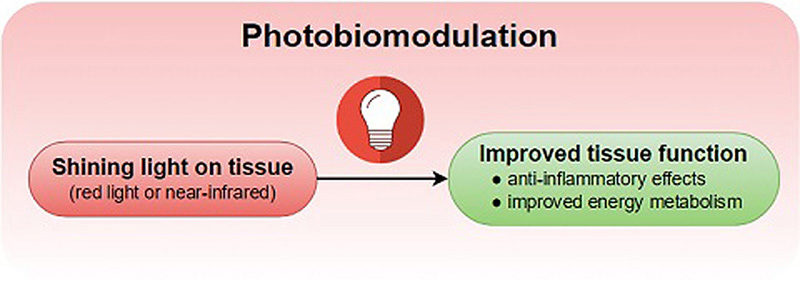


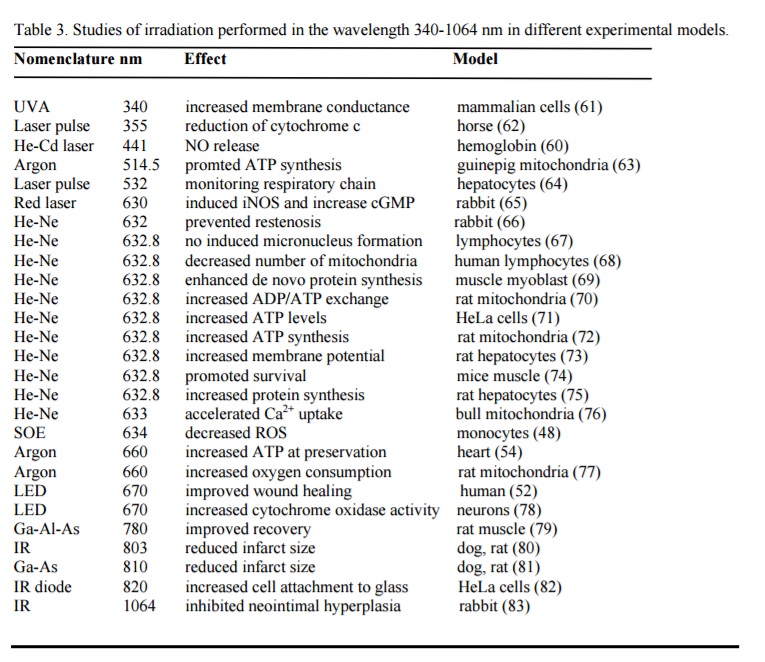




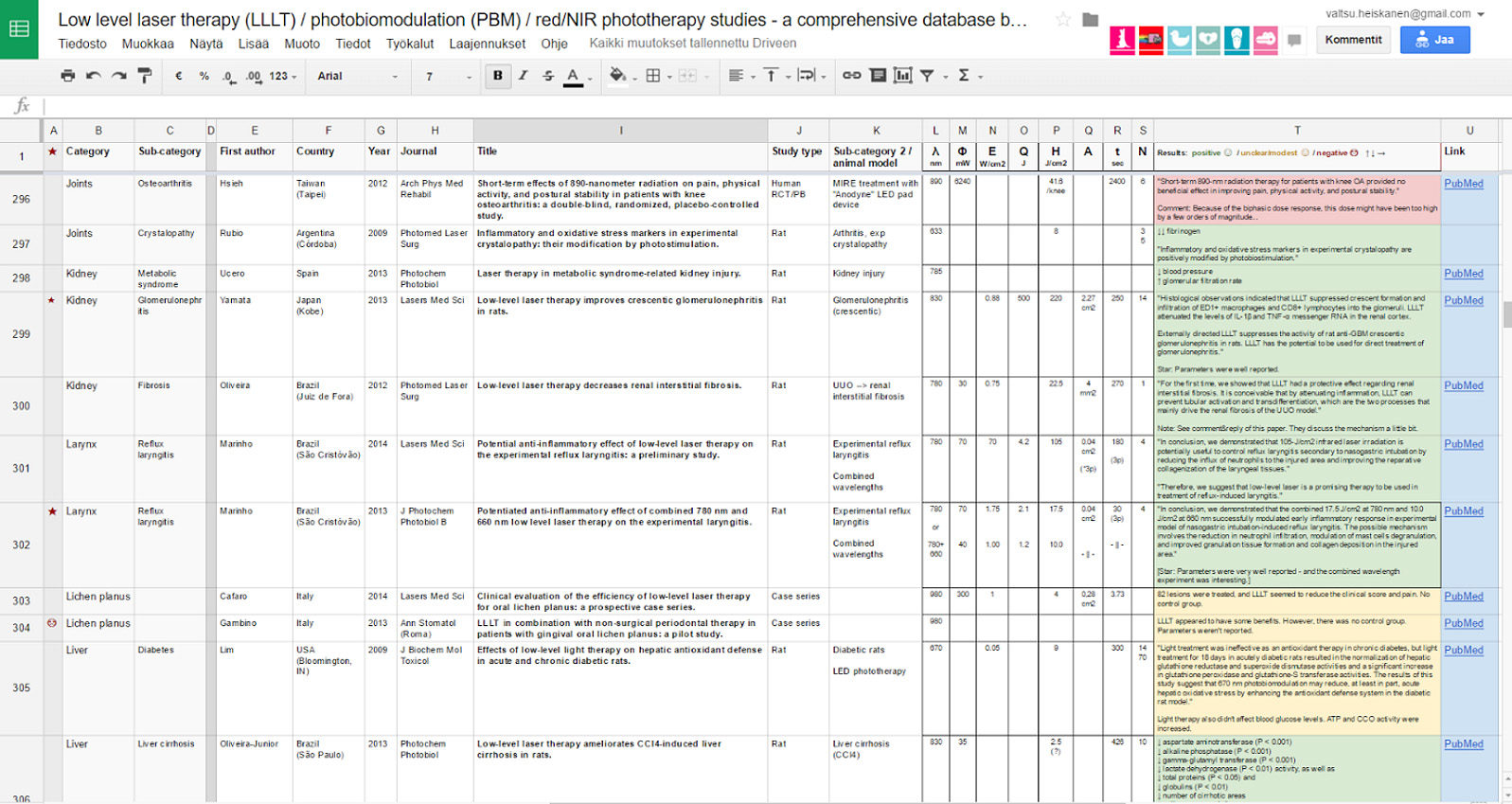










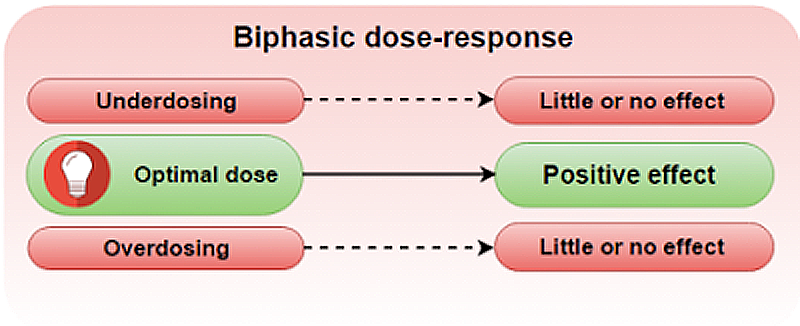

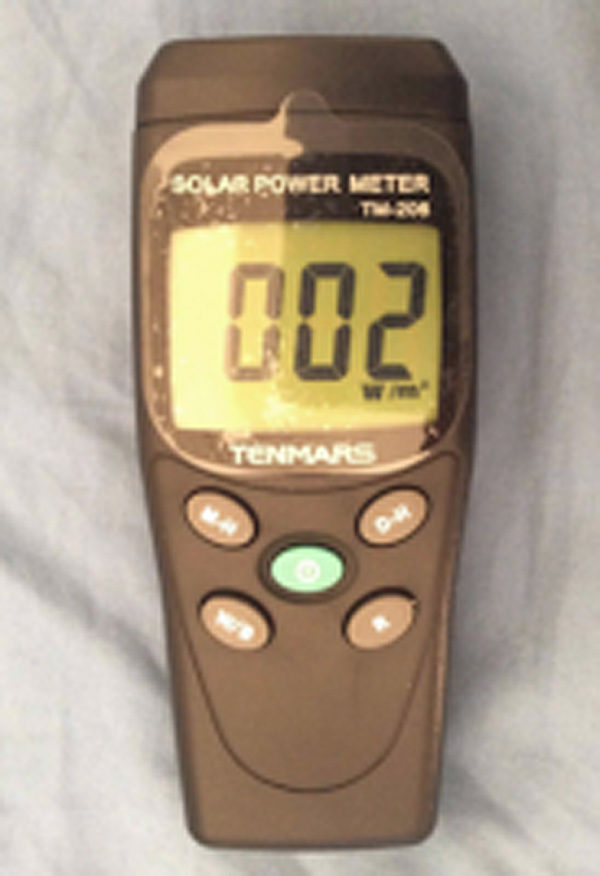

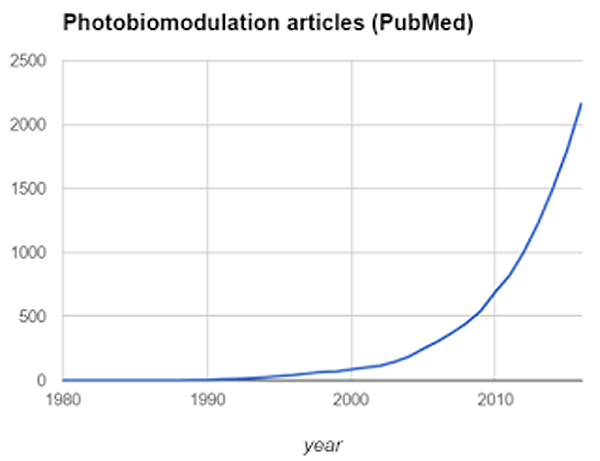










Reader Comments